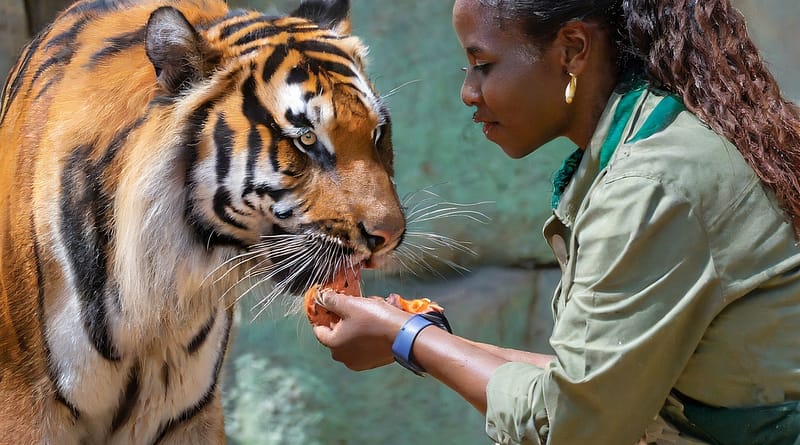What Do Tigers Eat? Unraveling the Predatory Diet of These Majestic Beasts
Introduction
Tigers, the majestic big cats that roam the wild landscapes of Asia, have captured the imagination of people worldwide. These apex predators are not only symbols of strength and grace but also vital components of their ecosystems. For an in-depth look at a specific tiger subspecies, explore Amur Tigers: The Majestic Giants of Siberia. In this article, we’ll delve into the intriguing world of tiger eating habits, exploring what these magnificent creatures consume to survive.
 Tiger Diet in the Wild
Tiger Diet in the Wild
In their natural habitats, tigers are formidable carnivores. They prey on a variety of animals, depending on their availability. Their diet includes ungulates like deer, wild boars, and antelope. They are also known to hunt larger animals, such as bison, and even smaller predators, like leopards. To secure a meal, tigers rely on their incredible strength and stealth.
Visual Placement Suggestion: Consider adding images of tigers stalking their prey in the wild, a tiger with a fresh kill, or a diagram showing the range of animals they hunt.
Tiger Diet in Captivity
Tigers in captivity, such as those in zoos and sanctuaries, have a different diet. Their meals are carefully planned to meet their nutritional needs. They are often fed a mixture of raw meat and specially formulated supplements to ensure they receive the necessary nutrients.
Exploring Their Diet Further
If you want to explore the specifics of what tigers eat in the wild or in captivity, you can check out the detailed articles here and the Wikipedia page on Tigers for a broader perspective on this remarkable species.
Hunting Habits
Tigers are renowned for their hunting prowess. They employ a combination of stealth and explosive power to capture their prey. Unlike some big cats, tigers are known to be excellent swimmers, which aids them in ambushing prey near water sources.
Variations in Tiger Diet
The tiger family consists of several subspecies, and their diets can vary. For instance, the Siberian tiger, known for its large size, often preys on larger mammals compared to smaller subspecies. These variations are adaptations to the specific environments they inhabit.
The Importance of a Varied Diet
A varied diet is essential for a tiger’s well-being. It ensures they receive a broad spectrum of nutrients. This adaptability in their diet makes them resilient and able to survive in diverse environments.
Human-Tiger Conflict
Tigers sometimes encroach on human settlements in search of food, leading to conflicts. Addressing these issues is vital for the conservation of both tigers and human communities.
Conservation Efforts
Various conservation organizations are dedicated to preserving these magnificent creatures. Highlight their work in protecting tiger populations.









